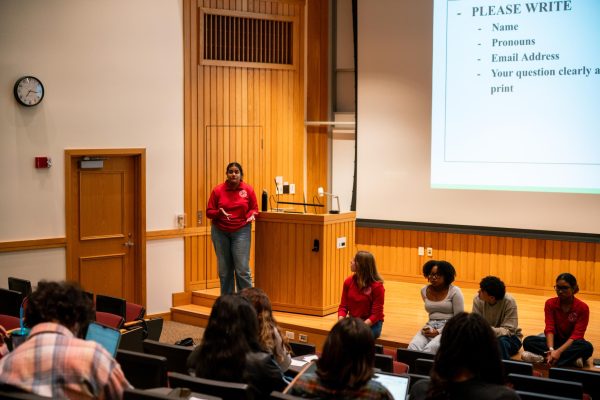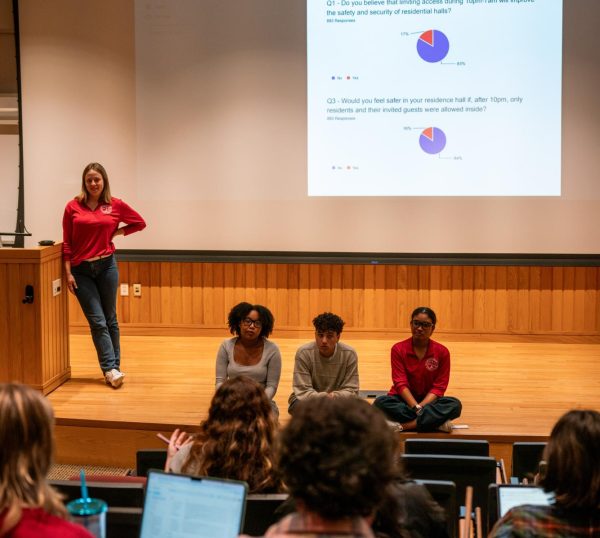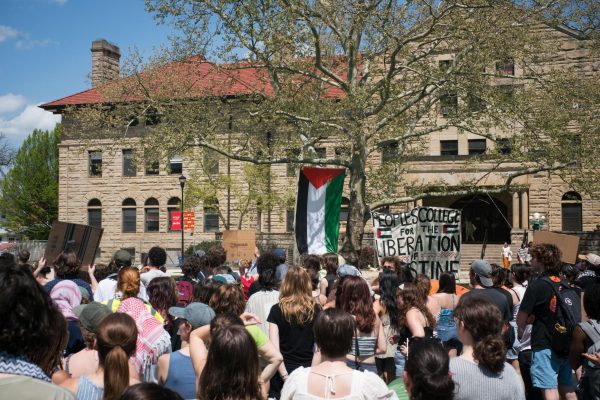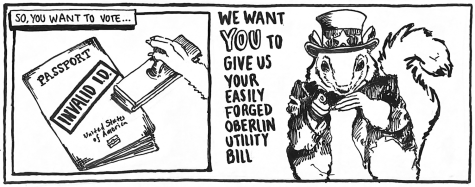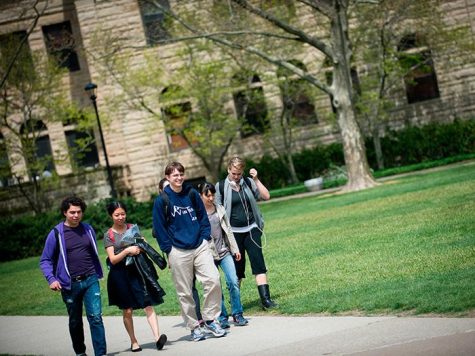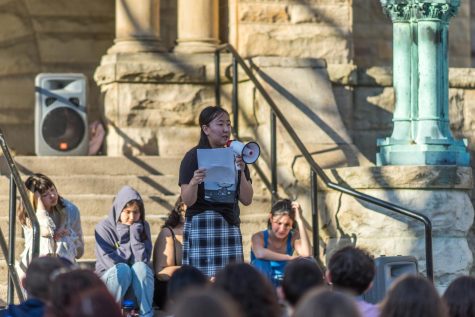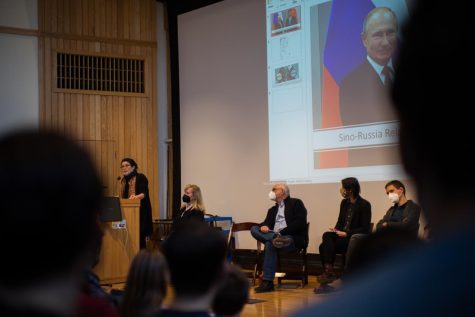Students Launch First Third World Liberation Conference
Third World House’s “Solidarity, Peace, and Progress” mural was painted in 1982 by Maria del Pilar O’Cadiz, OC ’86, with her father, prominent Chicanx muralist Sergio O’Cadiz Moctezuma, for her first-year Winter Term project. Pilar O’Cadiz will return to Oberlin as the keynote speaker for Oberlin’s Third World Liberation Conference tomorrow.
In honor of the 25th anniversary of the People of Color Conference hosted by Third World House in 1993, TWH will host a Third World Liberation Conference tomorrow. The conference will include sessions based in three core subjects: disability justice, immigrants’ rights, and religious diversity, with the long-term goal of “Liberation through Learning.”
There were multiple inspirations for this conference. For TWH Resident Assistant and College senior Rita Perez-Padilla, Case Western Reserve University’s Social Justice Teach-In provided a strong framework for the Liberation Conference.
“Recently [the Third World Liberation Conference Committee] found a conference that Case Western does that’s like an annual social justice teach-in that we went to,” Pérez-Padilla said. “We kind of wanted to build off of that, using the resources that are in the area rather than trying to build up from the ground.”
Another TWH RA, College junior Adam Lazere, found inspiration in the history of TWH.
“[TWH has] been doing some work, like looking into the mission statement and the history of this dorm, and trying to represent and really bring that to life on campus,” Lazere said. “As part of that, we’ve been doing a series of workshops and stuff like that, like looking into the mural [in TWH] and the history of that, and I think this [conference] is sort of just a natural continuation.”
The conference’s keynote speaker, Dr. Maria del Pilar O’Cadiz, OC ’86, is an alumna and former resident of TWH. As a student, she and her father, prominent Chicanx muralist Sergio O’Cadiz Moctezuma, painted the mural currently featured in the TWH lounge.
The Third World Liberation Conference Committee is headed by Senior Area Coordinator for Multicultural and Identity-Based Communities Atiya McGhee. McGhee was partly influenced to organize the conference based on conversations on campus concerning power dynamics.
“I was thinking in my head, ‘What are these central conversations that needed to happen that students are already kind of talking about but not talking about necessarily the power privilege ways it’s built up,’” McGhee said.
Other committee members include the Multicultural Resource Center Student Life Program Coordinators Libni Lopez and Devon Dobbs — Dobbs is also the Graduate Resident Coordinator for Multicultural and Identity-Based Communities — and Elliott Director, the MRC’s LGBTQ Community Coordinator.
Although many subjects can be addressed under the concept of “Liberation through Learning,” the committee chose to focus on disability justice, immigrants’ rights, and religious diversity based on the current political climate and campus events.
“We struggled a little bit to narrow [the theme] down because there are so many important facets of diversity to talk about, and they’re all important in their own ways,” Dobbs said. “I think part of it comes from the current political climate, everything that is happening with DACA and undocumented folks in general, and specifically on this campus too.”
McGhee said that the theme of Liberation through Le arning remains relevant to TWH’s original 1993 People of Color Conference.
“Liberation through learning in some ways is the ‘a-ha moment’ and validation of marginalized communities’ existence, but through our own language and because of white supremacy we will never have access to language unless we seek it out,” McGhee said.
The conference, for McGhee, is also a way to preserve the history of TWH.
“I don’t want this to get forgotten because the only reason I found out that Third World had a conference is we were cleaning out the archives,” McGhee said.
Lazere wants to continue preserving TWH’s history and plans to establish the conference as a chartered student organization, also hoping to appoint a historian role within TWH to archive its legacy. Pérez-Padilla, who wrote the charter for the conference, believes the annual nature of the conference will help maintain its efforts despite student turnover.
“I mean there’s turnover because that’s the point, right? You’re a student; you come and you leave, so I think sort of establishing something that says, ‘Look, we’ve been here for awhile,’ it’s really important to build that community,” Pérez-Padilla said.
The conference is sponsored by 11 campus organizations, and registration is open until today. For students unable to attend the workshops, Pérez-Padilla compiled a document of resources attached to the conference’s Facebook event. As the first Third World Liberation Conference, organizers like Lazere hope Oberlin students take from the event the value of self-education.
“I think people can take away a willingness to accept there are things you don’t know about and then you shouldn’t always be going to events that are something you’re comfortable with,” Lazere said.
“When I think of liberation through learning, I like to say that I’m a lifelong learner and I encourage and hope other people would consider themselves to also be lifelong learners,” Dobbs added.



